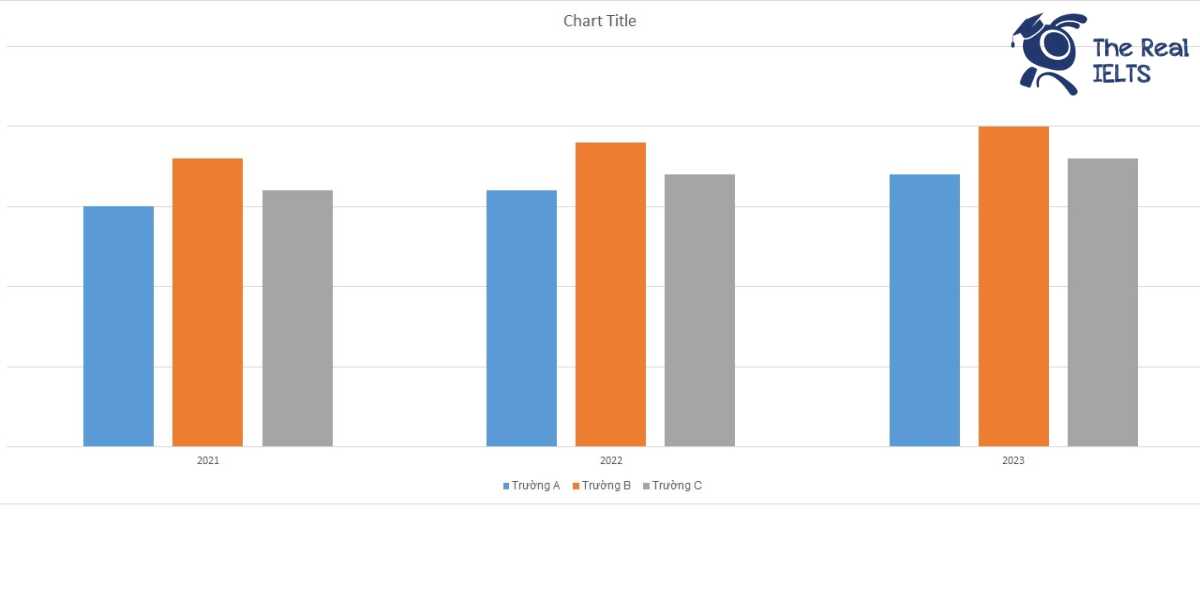Bài Writing có chủ đề là phân tích tác động của toàn cầu hóa lên văn hóa địa phương. Các bạn hãy nhớ viết outline trước, xong sau đó mới bắt đầu viết nhé.
Writing Outline: Analyzing the Impact of Globalization on Local Cultures
I. Introduction
A. Definition of Globalization
- Economic, social, cultural, and political interconnectedness
- Spread of ideas, goods, technology, and practices worldwide
B. Importance of studying the impact on local cultures - Cultural diversity and heritage
- Identity and social cohesion
C. Thesis statement - Globalization has both positive and negative impacts on local cultures, influencing cultural exchange, homogenization, and cultural preservation efforts.
II. Positive Impacts of Globalization on Local Cultures
A. Cultural Exchange and Integration
- Introduction of new ideas and practices
- Fusion of cuisines, music, art, and fashion
- Cross-cultural collaborations in various fields
B. Economic Benefits and Cultural Flourishing - Tourism and the promotion of local heritage
- Global markets for traditional crafts and products
- Enhanced economic opportunities leading to cultural revival
C. Technological Advancements and Cultural Preservation - Digital archiving of cultural artifacts and traditions
- Online platforms for cultural exchange and education
- Access to global resources for cultural institutions
III. Negative Impacts of Globalization on Local Cultures
A. Cultural Homogenization
- Dominance of Western culture and values
- Loss of unique cultural identities and practices
- Standardization of lifestyles and consumption patterns
B. Erosion of Traditional Practices and Languages - Decline in use of indigenous languages
- Displacement of traditional customs and rituals
- Influence of global media and entertainment
C. Economic Disparities and Cultural Marginalization - Unequal economic benefits leading to cultural exploitation
- Marginalization of minority cultures
- Impact on local artisans and traditional industries
IV. Case Studies
A. Positive Example: South Korea’s Cultural Export (Hallyu Wave)
- Spread of K-pop, Korean dramas, and fashion
- Economic growth and cultural pride
B. Negative Example: Indigenous Cultures in Latin America - Impact of multinational corporations on local traditions
- Loss of cultural lands and displacement of communities
C. Mixed Impact Example: India’s Cultural Dynamism - Preservation of traditional arts alongside Western influence
- Growth of Bollywood and global cultural presence
V. Strategies for Mitigating Negative Impacts
A. Cultural Preservation Initiatives
- Government policies and funding for cultural projects
- Community-led efforts and grassroots movements
B. Education and Awareness Programs - Inclusion of cultural education in school curricula
- Public awareness campaigns about cultural heritage
C. Sustainable Economic Practices - Supporting local artisans and businesses
- Promoting fair trade and ethical tourism
VI. Conclusion
A. Recap of the dual impact of globalization on local cultures
B. Emphasis on the need for a balanced approach
- Encouraging cultural exchange while safeguarding diversity
- Fostering global connections without eroding local identities
C. Final thoughts on the future of cultural globalization - Potential for a more inclusive and culturally diverse world
- Role of individuals, communities, and policymakers in shaping cultural globalization
Từ vựng và cụm từ vựng sử dụng trong bài viết:
Analyzing the Impact of Globalization on Local Cultures
Phân tích tác động của toàn cầu hóa đối với các nền văn hóa địa phương
I. Introduction
Globalization – Toàn cầu hóa
economic, social, cultural, and political interconnectedness – sự kết nối kinh tế, xã hội, văn hóa và chính trị
spread of ideas, goods, technology, and practices – sự lan tỏa của ý tưởng, hàng hóa, công nghệ và thực hành
cultural diversity – đa dạng văn hóa
heritage – di sản
identity and social cohesion – bản sắc và sự gắn kết xã hội
cultural exchange – trao đổi văn hóa
homogenization – đồng nhất hóa
cultural preservation efforts – các nỗ lực bảo tồn văn hóa
II. Positive Impacts of Globalization on Local Cultures
A. Cultural Exchange and Integration
introduction of new ideas and practices – sự giới thiệu các ý tưởng và thực hành mới
fusion of cuisines, music, art, and fashion – sự kết hợp của ẩm thực, âm nhạc, nghệ thuật và thời trang
cross-cultural collaborations – các hợp tác đa văn hóa
B. Economic Benefits and Cultural Flourishing
economic benefits – lợi ích kinh tế
promotion of local heritage – quảng bá di sản địa phương
global markets – thị trường toàn cầu
traditional crafts and products – thủ công và sản phẩm truyền thống
enhanced economic opportunities – cơ hội kinh tế nâng cao
cultural revival – sự phục hưng văn hóa
C. Technological Advancements and Cultural Preservation
technological advancements – tiến bộ công nghệ
digital archiving – lưu trữ kỹ thuật số
cultural artifacts and traditions – hiện vật và truyền thống văn hóa
online platforms – các nền tảng trực tuyến
cultural exchange and education – trao đổi và giáo dục văn hóa
global resources – tài nguyên toàn cầu
cultural institutions – các tổ chức văn hóa
III. Negative Impacts of Globalization on Local Cultures
A. Cultural Homogenization
dominance of Western culture and values – sự thống trị của văn hóa và giá trị phương Tây
loss of unique cultural identities and practices – mất đi các bản sắc và thực hành văn hóa độc đáo
standardization of lifestyles and consumption patterns – chuẩn hóa lối sống và mô hình tiêu dùng
B. Erosion of Traditional Practices and Languages
decline in use of indigenous languages – sự suy giảm trong việc sử dụng các ngôn ngữ bản địa
displacement of traditional customs and rituals – sự thay thế các phong tục và nghi lễ truyền thống
influence of global media and entertainment – ảnh hưởng của truyền thông và giải trí toàn cầu
C. Economic Disparities and Cultural Marginalization
unequal economic benefits – lợi ích kinh tế không đồng đều
cultural exploitation – sự khai thác văn hóa
marginalization of minority cultures – sự gạt ra ngoài lề của các nền văn hóa thiểu số
local artisans and traditional industries – các nghệ nhân địa phương và ngành công nghiệp truyền thống
IV. Case Studies
A. Positive Example: South Korea’s Cultural Export (Hallyu Wave)
Hallyu Wave – Làn sóng Hàn Quốc
spread of K-pop, Korean dramas, and fashion – sự lan tỏa của K-pop, phim truyền hình Hàn Quốc và thời trang
cultural pride – niềm tự hào văn hóa
B. Negative Example: Indigenous Cultures in Latin America
multinational corporations – các tập đoàn đa quốc gia
loss of cultural lands – mất đi các vùng đất văn hóa
displacement of communities – sự di dời của các cộng đồng
C. Mixed Impact Example: India’s Cultural Dynamism
traditional arts – nghệ thuật truyền thống
Western influence – ảnh hưởng phương Tây
global cultural presence – sự hiện diện văn hóa toàn cầu
V. Strategies for Mitigating Negative Impacts
A. Cultural Preservation Initiatives
cultural preservation initiatives – các sáng kiến bảo tồn văn hóa
government policies and funding – chính sách và tài trợ của chính phủ
community-led efforts and grassroots movements – các nỗ lực do cộng đồng lãnh đạo và các phong trào cơ sở
B. Education and Awareness Programs
education and awareness programs – các chương trình giáo dục và nâng cao nhận thức
cultural education in school curricula – giáo dục văn hóa trong chương trình giảng dạy của trường học
public awareness campaigns – các chiến dịch nâng cao nhận thức công chúng
C. Sustainable Economic Practices
sustainable economic practices – các thực hành kinh tế bền vững
local artisans and businesses – các nghệ nhân và doanh nghiệp địa phương
fair trade and ethical tourism – thương mại công bằng và du lịch có đạo đức
VI. Conclusion
dual impact of globalization – tác động kép của toàn cầu hóa
balanced approach – cách tiếp cận cân bằng
safeguarding diversity – bảo vệ sự đa dạng
cultural globalization – toàn cầu hóa văn hóa
inclusive and culturally diverse world – thế giới bao trùm và đa dạng văn hóa
individuals, communities, and policymakers – cá nhân, cộng đồng và các nhà hoạch định chính sách
Triển khai bài viết theo dàn ý
I. Introduction
Globalization, a multifaceted phenomenon characterized by economic, social, cultural, and political interconnectedness, has revolutionized the way ideas, goods, technology, and practices spread across the world. This interconnectedness is evident in the seamless exchange of cultural elements, the integration of economies, and the rapid dissemination of information. Studying the impact of globalization on local cultures is crucial as it affects cultural diversity, heritage, identity and social cohesion. This analysis seeks to explore how globalization has both positive and negative impacts on local cultures, influencing cultural exchange, homogenization, and cultural preservation efforts.
II. Positive Impacts of Globalization on Local Cultures
A. Cultural Exchange and Integration
Globalization has facilitated the introduction of new ideas and practices across cultures. This cultural exchange has led to the fusion of cuisines, music, art, and fashion, enriching local traditions with new elements. For instance, the integration of international cuisines in local food culture has introduced new flavors and culinary techniques, creating a dynamic and diverse food scene. Additionally, cross-cultural collaborations in various fields, such as film, literature, and technology, have fostered creativity and innovation, leading to the emergence of new cultural forms and expressions.
B. Economic Benefits and Cultural Flourishing
The economic benefits brought about by globalization have also contributed to the flourishing of local cultures. Tourism, driven by global interest in cultural heritage, has become a significant source of income for many communities. This economic boost has facilitated the promotion of local heritage sites, traditional crafts and products, and cultural festivals. Furthermore, access to global markets has enabled local artisans to sell their products internationally, ensuring the survival and revival of traditional crafts and industries. Enhanced economic opportunities have, in many cases, led to a cultural revival, as communities gain the resources needed to sustain and celebrate their cultural heritage.
C. Technological Advancements and Cultural Preservation
Technological advancements have played a crucial role in the preservation and promotion of local cultures. Digital archiving has allowed for the preservation of cultural artifacts and traditions, ensuring that they are accessible to future generations. Online platforms have provided spaces for cultural exchange and education, allowing individuals from different parts of the world to learn about and appreciate diverse cultures. Access to global resources, such as funding and expertise, has empowered cultural institutions to undertake preservation projects and initiatives, safeguarding their cultural heritage in the digital age.
III. Negative Impacts of Globalization on Local Cultures
A. Cultural Homogenization
One of the significant negative impacts of globalization is cultural homogenization. The dominance of Western culture and values has led to the erosion of unique cultural identities and practices. Local traditions and lifestyles are increasingly being replaced by standardized global consumption patterns and lifestyles, driven by multinational corporations and global media. This cultural homogenization threatens the diversity of cultural expressions and undermines the richness of local traditions.
B. Erosion of Traditional Practices and Languages
Globalization has also contributed to the decline in the use of indigenous languages and the displacement of traditional customs and rituals. The influence of global media and entertainment has often overshadowed local cultural expressions, leading to a decrease in the practice and transmission of traditional knowledge. This erosion of traditional practices and languages poses a significant threat to the cultural heritage and identity of many communities, as younger generations are drawn towards global cultural trends at the expense of their own cultural heritage.
C. Economic Disparities and Cultural Marginalization
The economic benefits of globalization are often unevenly distributed, leading to cultural exploitation and marginalization. Minority cultures, in particular, are vulnerable to the impacts of economic disparities. Multinational corporations may exploit local resources and labor, leading to the displacement of communities and the destruction of cultural lands. Additionally, local artisans and traditional industries may struggle to compete with mass-produced global goods, resulting in the loss of traditional livelihoods and cultural practices.
IV. Case Studies
A. Positive Example: South Korea’s Cultural Export (Hallyu Wave)
The Hallyu Wave, or Korean Wave, exemplifies the positive impact of globalization on local culture. The global spread of K-pop, Korean dramas, and fashion has not only boosted South Korea’s economy but also enhanced its cultural pride and international cultural presence. This cultural export has fostered a greater appreciation and understanding of Korean culture worldwide, demonstrating how globalization can promote cultural exchange and economic growth.
B. Negative Example: Indigenous Cultures in Latin America
In contrast, the impact of multinational corporations on indigenous cultures in Latin America highlights the negative aspects of globalization. The exploitation of natural resources and the displacement of indigenous communities have led to the loss of cultural lands and the erosion of traditional practices. These communities face significant challenges in preserving their cultural heritage amidst the pressures of globalization and economic exploitation.
C. Mixed Impact Example: India’s Cultural Dynamism
India’s cultural landscape presents a mixed impact of globalization. While traditional arts and crafts continue to thrive, they coexist with significant Western influence in various aspects of daily life. Bollywood, India’s film industry, has achieved global recognition, contributing to both cultural preservation and the diffusion of Indian culture worldwide. This dynamic interplay between cultural preservation and globalization highlights the complex and multifaceted nature of cultural globalization.
V. Strategies for Mitigating Negative Impacts
A. Cultural Preservation Initiatives
To mitigate the negative impacts of globalization, it is essential to support cultural preservation initiatives. Government policies and funding can play a vital role in safeguarding cultural heritage through projects and programs. Community-led efforts and grassroots movements are equally important, as they empower local communities to take an active role in preserving their cultural traditions and practices.
B. Education and Awareness Programs
Education and awareness programs are crucial in promoting the importance of cultural heritage. Including cultural education in school curricula can foster a sense of pride and responsibility towards cultural preservation among younger generations. Public awareness campaigns can highlight the value of cultural diversity and encourage broader societal support for preservation efforts.
C. Sustainable Economic Practices
Promoting sustainable economic practices can help protect local cultures from the adverse effects of globalization. Supporting local artisans and businesses ensures that traditional crafts and industries can thrive. Fair trade and ethical tourism practices can provide economic benefits to communities while respecting and preserving their cultural heritage.
VI. Conclusion
Globalization has a dual impact on local cultures, bringing both opportunities and challenges. While it facilitates cultural exchange and economic growth, it also poses threats to cultural diversity and heritage. A balanced approach is needed to encourage cultural exchange while safeguarding the uniqueness of local cultures. Fostering global connections without eroding local identities requires the collective efforts of individuals, communities, and policymakers. By promoting cultural preservation initiatives, education, and sustainable economic practices, we can work towards a future where cultural globalization is inclusive and enriching, preserving the world’s diverse cultural heritage for generations to come.
Cấu trúc câu và cấu trúc ngữ pháp trong bài viết
- Complex Sentences (Câu phức)
- Definition of Globalization: “Globalization, a multifaceted phenomenon characterized by economic, social, cultural, and political interconnectedness, has revolutionized the way ideas, goods, technology, and practices spread across the world.”
- Thesis Statement: “This analysis seeks to explore how globalization has both positive and negative impacts on local cultures, influencing cultural exchange, homogenization, and cultural preservation efforts.”
- Relative Clauses (Mệnh đề quan hệ)
- “Globalization, a multifaceted phenomenon characterized by economic, social, cultural, and political interconnectedness, has revolutionized the way ideas, goods, technology, and practices spread across the world.”
- “The economic benefits brought about by globalization have also contributed to the flourishing of local cultures.”
- Passive Voice (Câu bị động)
- “This interconnectedness is evident in the seamless exchange of cultural elements, the integration of economies, and the rapid dissemination of information.”
- “This analysis seeks to explore how globalization has been both positive and negative impacts on local cultures.”
- Gerunds and Infinitives (Danh động từ và động từ nguyên thể)
- “Studying the impact of globalization on local cultures is crucial as it affects cultural diversity, heritage, identity, and social cohesion.”
- “To mitigate the negative impacts of globalization, it is essential to support cultural preservation initiatives.”
- Parallel Structure (Cấu trúc song song)
- “The fusion of cuisines, music, art, and fashion…”
- “This interconnectedness is evident in the seamless exchange of cultural elements, the integration of economies, and the rapid dissemination of information.”
- Conditional Sentences (Câu điều kiện)
- “If globalization is managed carefully, it can bring positive impacts to local cultures.”
- “Promoting sustainable economic practices can help protect local cultures from the adverse effects of globalization.”
- Subordinating Conjunctions (Liên từ phụ thuộc)
- “While traditional arts and crafts continue to thrive, they coexist with significant Western influence in various aspects of daily life.”
- “As younger generations are drawn towards global cultural trends at the expense of their own cultural heritage.”
- Adverbial Clauses (Mệnh đề trạng ngữ)
- “While it facilitates cultural exchange and economic growth, it also poses threats to cultural diversity and heritage.”
- “As communities gain the resources needed to sustain and celebrate their cultural heritage.”
- Appositive Phrases (Cụm danh từ đồng vị)
- “Globalization, a multifaceted phenomenon characterized by economic, social, cultural, and political interconnectedness, has revolutionized the way ideas, goods, technology, and practices spread across the world.”
- “The Hallyu Wave, or Korean Wave, exemplifies the positive impact of globalization on local culture.”
- Noun Clauses (Mệnh đề danh từ)
- “Studying the impact of globalization on local cultures is crucial as it affects cultural diversity, heritage, identity, and social cohesion.”
- “One of the significant negative impacts of globalization is that it leads to the erosion of unique cultural identities and practices.”
- Infinitive Phrases (Cụm động từ nguyên thể)
- “To mitigate the negative impacts of globalization, it is essential to support cultural preservation initiatives.”
- “Including cultural education in school curricula can foster a sense of pride and responsibility towards cultural preservation among younger generations.”
- Prepositional Phrases (Cụm giới từ)
- “In contrast, the impact of multinational corporations on indigenous cultures in Latin America highlights the negative aspects of globalization.”
- “By promoting cultural preservation initiatives, education, and sustainable economic practices, we can work towards a future where cultural globalization is inclusive and enriching.”
Học lại bài viết: Writing skill part 16: The Evolution of Language in the Digital Age.















